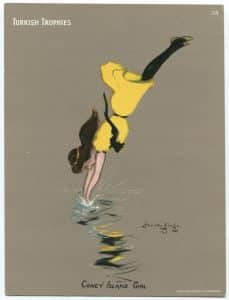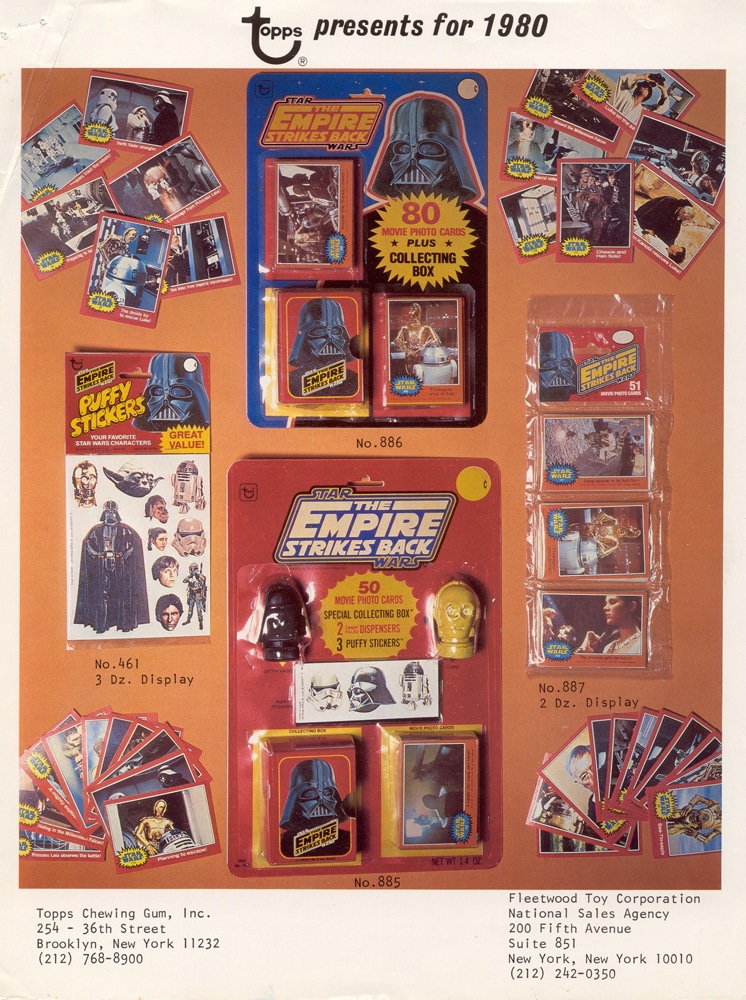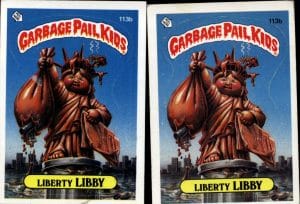 With more than 4,000 examples of trading cards in its collections, The Strong has documented the form’s evolution over more than a century and currently shows off more than 800 examples as part of the museum’s Online Collections. From cigarette cards from the 1890s that feature actresses of the day to Star Wars collecting cards from the 1990s, there’s a lot more to discover than just baseball players and their statistics.
With more than 4,000 examples of trading cards in its collections, The Strong has documented the form’s evolution over more than a century and currently shows off more than 800 examples as part of the museum’s Online Collections. From cigarette cards from the 1890s that feature actresses of the day to Star Wars collecting cards from the 1990s, there’s a lot more to discover than just baseball players and their statistics.
I completely understand the museum’s collecting motivation since trading cards played a big role in my childhood and my affection for them persisted into my young adult years. Even now, I have a box at home with various hockey and basketball cards—just in case I need a dose of nostalgia. As a kid, part of the appeal of trading cards was the flat stick of sugar-coated bubble gum included in every pack. My friends and I would walk to the local pharmacy, pick out a couple of packs of trading cards, go sit on my neighbor’s porch, open the packs, start chewing the gum, and then start sorting the cards and comparing what we had.
 The start of the trading card dates to the late 1800s when tobacco manufacturers enclosed lithographed advertisements on heavy card stock inside cigarette packages to keep them from getting crushed. During World War II, when paper and cardboard were needed for wartime purposes, cigarette manufacturers stopped producing these cards. Modern trading cards trace their history back to the 1950s when they came packed as a bonus with bubble gum. Eventually trading cards became the primary focus and the stick of bubble gum turned into the extra attraction.
The start of the trading card dates to the late 1800s when tobacco manufacturers enclosed lithographed advertisements on heavy card stock inside cigarette packages to keep them from getting crushed. During World War II, when paper and cardboard were needed for wartime purposes, cigarette manufacturers stopped producing these cards. Modern trading cards trace their history back to the 1950s when they came packed as a bonus with bubble gum. Eventually trading cards became the primary focus and the stick of bubble gum turned into the extra attraction.
 Looking back at my childhood hobby, I now recognize that collectible cards fall into three separate categories: sports cards (predominantly baseball), non-sports or entertainment cards (from pop music groups to movie scenes), and collectible card games (such as Pokémon). Although baseball cards remain a popular collectible in both new and antique versions, non-sports cards fulfilled a different need in the pre-Internet, pre-Netflix, pre-VCR era. In the days before we could DVR a favorite television show or Google our favorite recording artist to watch the latest video, trading cards served as another way for fans of movies, music, and television to experience their favorites as they strove to collect complete card series and sets. Usually a pack of cards included one card with a checklist for the set so that you could mark off your holdings and identify the cards you hoped to acquire in trades with your friends. My entertainment card collecting in the late 1970s centered on television series such as Charlie’s Angels and the original Battlestar Galactica. By the mid 1980s, I had moved on to cards that featured humor, especially Wacky Packages (a parody of American consumerism) and Garbage Pail Kids (a parody of Cabbage Patch Dolls).
Looking back at my childhood hobby, I now recognize that collectible cards fall into three separate categories: sports cards (predominantly baseball), non-sports or entertainment cards (from pop music groups to movie scenes), and collectible card games (such as Pokémon). Although baseball cards remain a popular collectible in both new and antique versions, non-sports cards fulfilled a different need in the pre-Internet, pre-Netflix, pre-VCR era. In the days before we could DVR a favorite television show or Google our favorite recording artist to watch the latest video, trading cards served as another way for fans of movies, music, and television to experience their favorites as they strove to collect complete card series and sets. Usually a pack of cards included one card with a checklist for the set so that you could mark off your holdings and identify the cards you hoped to acquire in trades with your friends. My entertainment card collecting in the late 1970s centered on television series such as Charlie’s Angels and the original Battlestar Galactica. By the mid 1980s, I had moved on to cards that featured humor, especially Wacky Packages (a parody of American consumerism) and Garbage Pail Kids (a parody of Cabbage Patch Dolls).
 So the next time you’re at the discount store or your local pharmacy and you spot that rack of collecting cards, check out the selection. Beyond the MLB, NBA, and NFL packs, I bet you’ll spot some interesting options from the world of music and entertainment that carry on a fine tradition of trading cards. Just don’t ask me to swap my 1977 Jaclyn Smith card for what you’ve got.
So the next time you’re at the discount store or your local pharmacy and you spot that rack of collecting cards, check out the selection. Beyond the MLB, NBA, and NFL packs, I bet you’ll spot some interesting options from the world of music and entertainment that carry on a fine tradition of trading cards. Just don’t ask me to swap my 1977 Jaclyn Smith card for what you’ve got.



